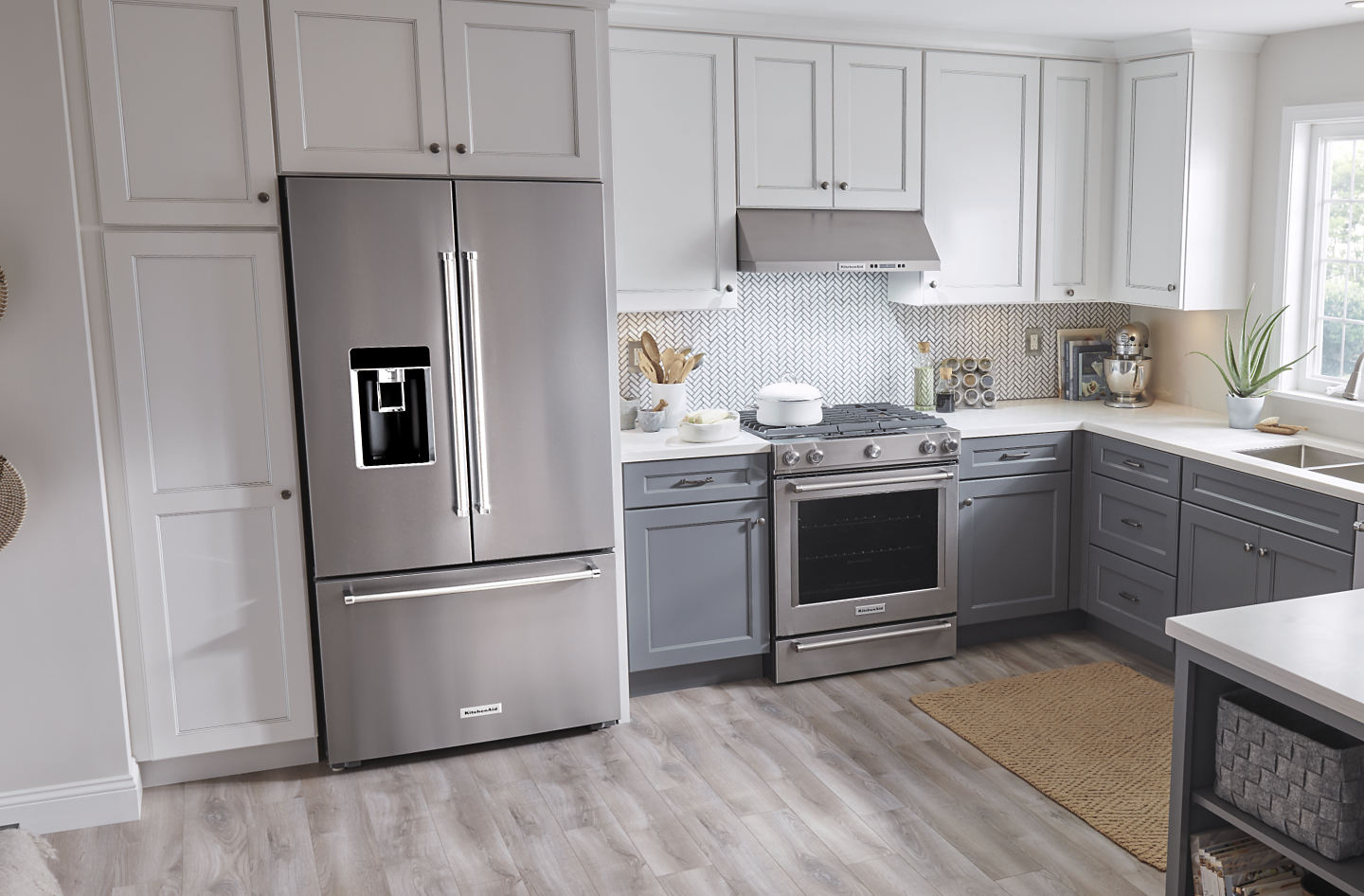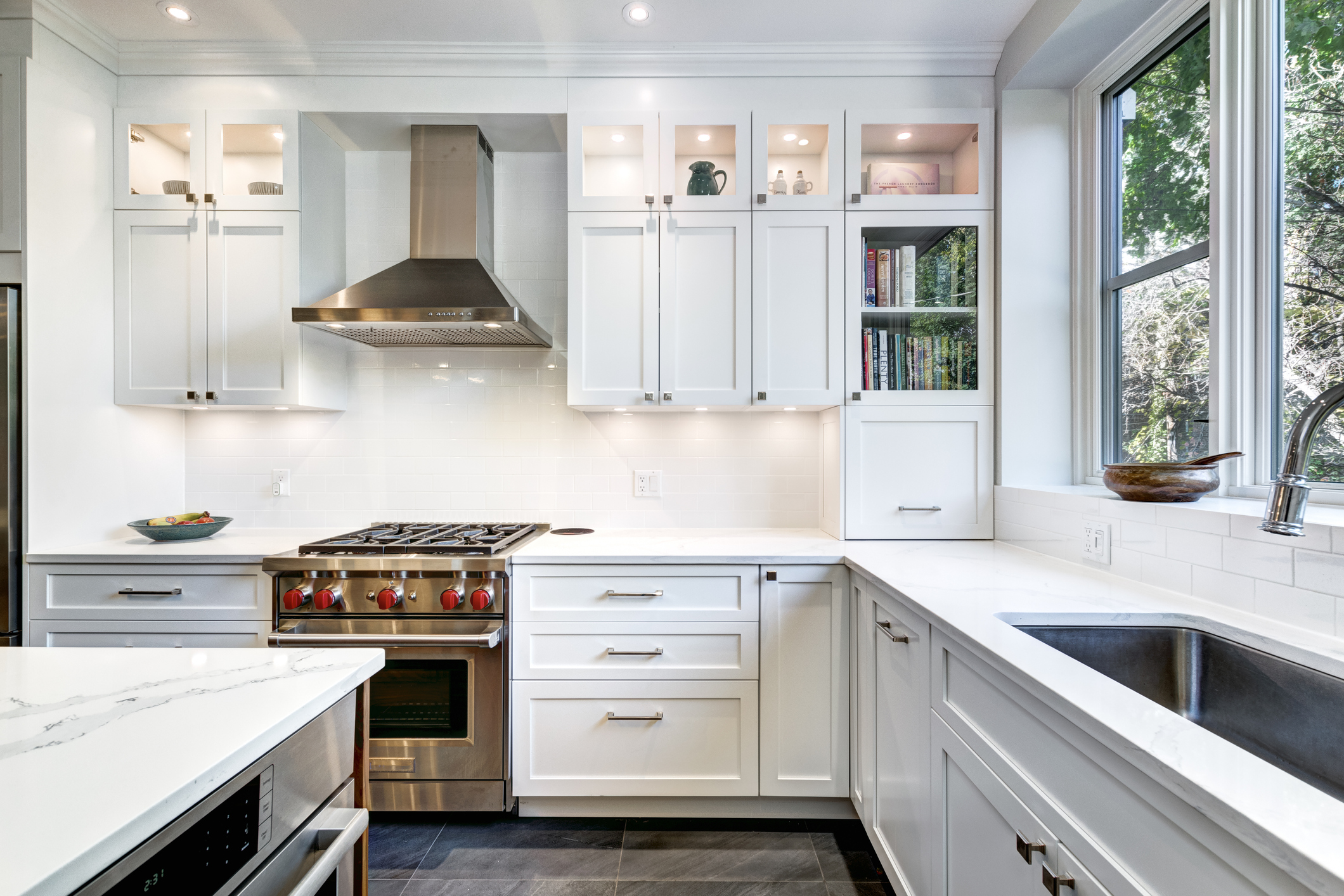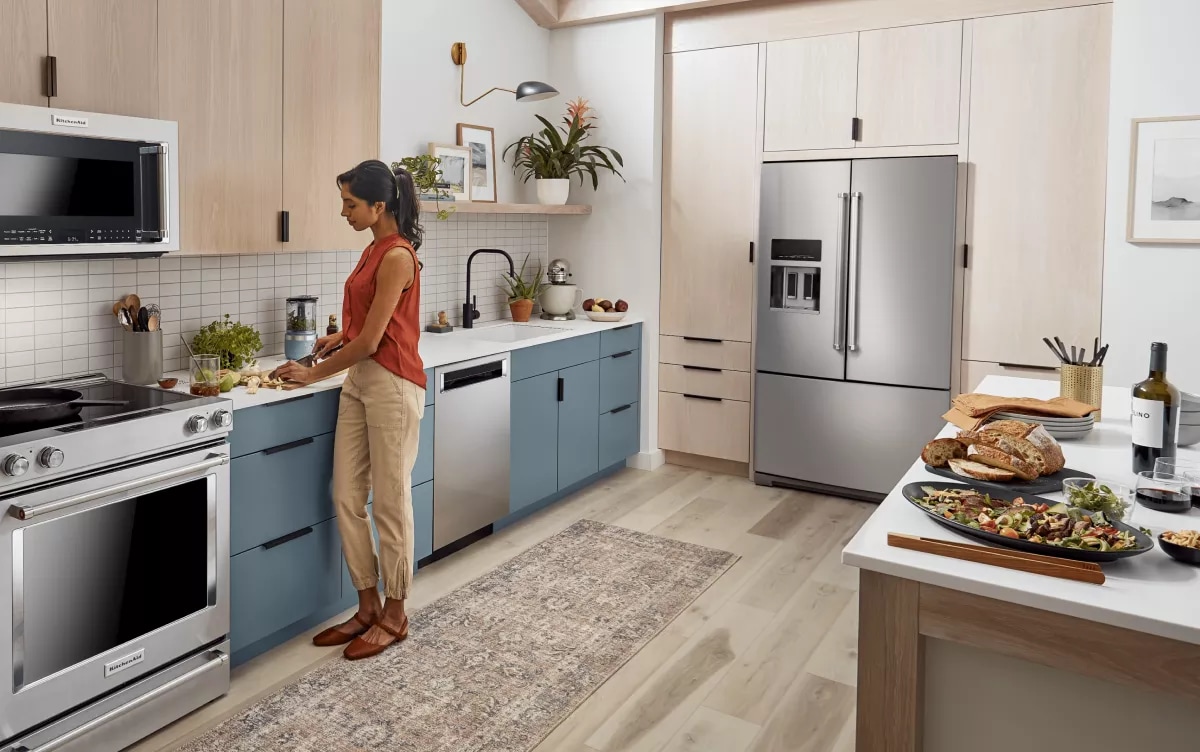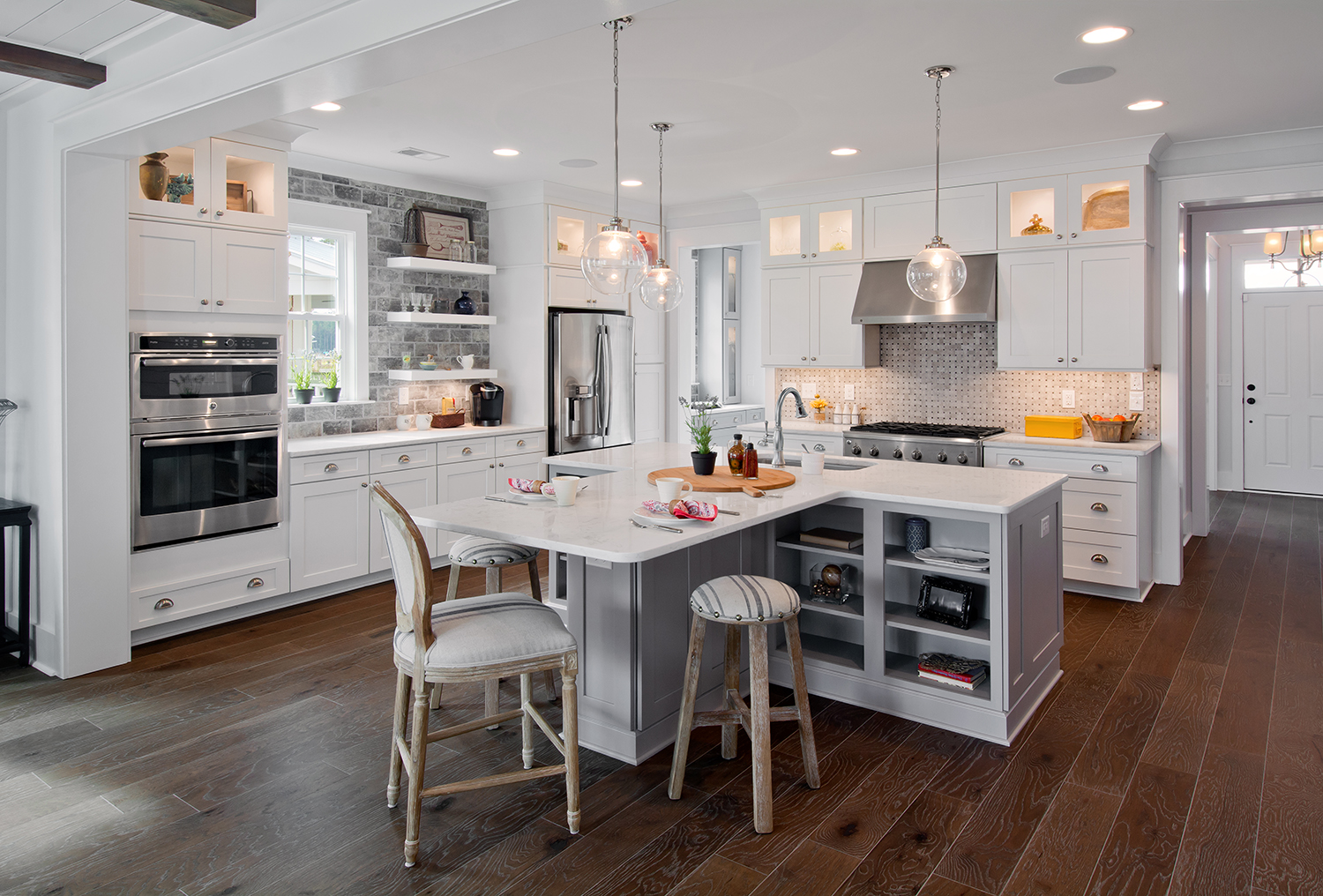Kitchen appliance placement should be strategic and practical to ensure efficient use of space. Proper placement can also enhance the aesthetic appeal of the kitchen.
The kitchen is the heart of the home, and it is where most of the cooking and entertaining takes place. As such, it is crucial to have a well-organized kitchen with appliances placed in the right location. Appliances such as the refrigerator, stove, and dishwasher should be positioned in a way that makes them easily accessible and functional.
Additionally, the placement of smaller appliances like toasters, blenders, and mixers should also be considered to create a clutter-free and visually appealing workspace. By paying attention to the placement of kitchen appliances, one can create a functional and aesthetically pleasing kitchen that meets their needs.
Maximizing Your Kitchen’s Layout
When arranging your kitchen, maximizing space and functionality is essential. Assess the available space and consider the golden triangle principle, which focuses on the relationship between the sink, cooktop, and refrigerator. This layout optimizes workflow and efficiency, ensuring a smooth cooking experience.
Strategic Placement Of The Refrigerator
Strategic placement of the refrigerator in the kitchen is crucial for accessibility and traffic flow. Placing the refrigerator near the main entrance to the kitchen ensures easy access for family members and guests. It’s important to maintain a clear pathway to the refrigerator to prevent congestion in the kitchen. Additionally, positioning the refrigerator in close proximity to countertops and the sink facilitates efficient meal preparation and cleanup. This layout reduces the need to move back and forth across the kitchen, enhancing overall functionality. By considering these factors, homeowners can optimize the placement of their refrigerator for a more convenient and practical kitchen space.
Stove And Oven Considerations
When it comes to kitchen appliance placement, the stove and oven are of utmost importance. Safety and ventilation should be top priorities when deciding on their placement. It is crucial to ensure that there is sufficient space around the stove to prevent any accidental burns or fires. Adequate ventilation is also necessary to eliminate cooking odors and maintain a healthy indoor environment.
Creating an efficient cooking zone is essential for a functional kitchen. Placing the stove and oven in close proximity to the refrigerator and countertop workspace allows for easy access and smooth workflow. This arrangement minimizes unnecessary movement and maximizes efficiency during meal preparation.
In conclusion, proper placement of kitchen appliances, especially the stove and oven, plays a significant role in ensuring safety and creating an efficient cooking zone. By considering safety and ventilation factors, homeowners can design a functional and user-friendly kitchen space.

Credit: www.kitchenaid.com
Dishwasher Positioning For Ease Of Use
| Kitchen Appliance Placement | |
|---|---|
| Heading: Dishwasher Positioning for Ease of Use | |
| Subheading: Loading and Unloading Efficiency | Integration with Sink and Storage |
|
Proper placement of the dishwasher in your kitchen can significantly enhance its usability. When positioning the dishwasher, consider placing it near the sink for easy access to water and plumbing connections. This allows for efficient loading and unloading of dishes without the need to carry them across the kitchen. Additionally, integrating the dishwasher with nearby storage areas can further improve its functionality. Keep frequently used items such as plates, glasses, and silverware within reach, ensuring a smooth workflow when unloading clean dishes. Consider installing cabinets or drawers specifically designed to accommodate dishwasher items, optimizing organization and convenience. By strategically placing your dishwasher, you can create a seamless workflow in your kitchen, reducing unnecessary movement and maximizing efficiency. |
|
Sink Area Optimization
Optimize your sink area by strategically placing kitchen appliances for efficiency and convenience. Ensure easy access to frequently used tools and minimize clutter for a streamlined and functional cooking space. Efficient kitchen appliance placement can enhance your workflow and create a more organized and enjoyable culinary experience.
| Optimizing Sink Area Placement |
|---|
| Consider centralizing the sink area to maximize workflow and clean-up efficiency. Placing the sink in the middle of the counter space allows for easy access to both sides of the kitchen, minimizing the need to move around too much while preparing meals. Additionally, the central placement allows for a clear view of the surrounding areas, making it easier to monitor any spills or messes that may require immediate attention. |
| When it comes to workflow, a central sink placement allows for a smooth and uninterrupted movement from one task to another. This not only saves time but also reduces the chances of accidents due to unnecessary movements in a cramped space. |
| In terms of clean-up, a central sink placement makes it easier to access and clean dishes, pots, and pans from both sides of the kitchen. It also reduces the need for carrying heavy items across the kitchen, which could lead to spills or accidents. |
Small Appliance Storage Solutions
Organizing small kitchen appliances can be a daunting task, but there are solutions to reduce countertop clutter and improve accessibility. One solution is to store daily use appliances like toasters, coffee makers, and blenders in a designated cabinet or on a dedicated shelf. This not only keeps them out of sight, but also frees up valuable counter space. Another option is to use pull-out drawers or sliding shelves to easily access appliances stored in lower cabinets.
For appliances that are too large to store in cabinets, consider using appliance garages or rolling carts that can be easily moved around the kitchen as needed. Additionally, utilizing vertical space with hanging racks or shelves can provide extra storage for small appliances like food processors or hand mixers.
Overall, finding the right storage solutions for small kitchen appliances can improve the functionality and organization of your kitchen.
| Pros | Cons |
|---|---|
| Reduces countertop clutter | May require additional cabinet or shelf space |
| Improves accessibility of daily use appliances | Appliance garages and rolling carts can take up floor space |
| Utilizes vertical space for extra storage | May require rearranging kitchen layout |
Customizing For Kitchen Size And Shape
Kitchen Appliance Placement is crucial for customizing your kitchen to fit its size and shape. When it comes to galley kitchens, it’s important to adapt and make the most of the limited space. Consider the placement of appliances such as refrigerators, ovens, and dishwashers to maximize efficiency and functionality.
In L-shaped layouts, take advantage of the corner space by installing a corner sink or incorporating a lazy Susan cabinet for easy access. Utilize the countertop space effectively by placing commonly used appliances within reach.
When customizing your kitchen, remember to consider the workflow and create a functional and ergonomic layout. Avoid overcrowding by spacing out appliances appropriately, allowing for ease of movement and accessibility.
By carefully planning and customizing appliance placement, you can optimize your kitchen’s efficiency and create a space that is both visually appealing and functional.

Credit: www.albertlee.biz
Incorporating Kitchen Islands Effectively
One of the key aspects of optimizing your kitchen space is ensuring effective placement of kitchen appliances. When it comes to incorporating kitchen islands, it is essential to consider how they can enhance workflow and integrate appliances seamlessly. By strategically placing appliances such as the sink, stove, and refrigerator on the kitchen island, you can create a functional and efficient workspace. This allows for easy access to these essential tools while preparing meals. Additionally, incorporating storage solutions like cabinets and drawers within the kitchen island can further enhance organization and accessibility. Overall, thoughtful placement of kitchen appliances on the island can greatly improve the workflow in your kitchen, making cooking and meal preparation a breeze.
Essential Tips For Open-plan Kitchens
Kitchen Appliance Placement is crucial in open-plan kitchens, where both aesthetic and functionality play a significant role. Strategic positioning of appliances is key to maintaining a harmonious visual appeal while ensuring practicality. When it comes to entertaining, it’s essential to consider the flow of movement and access to appliances. Placing the refrigerator and dishwasher away from the primary cooking and prep zone can enhance both the efficiency of the space and the overall visual appeal. Moreover, integrating built-in appliances and concealing others behind cabinetry can contribute to a seamless and streamlined look. Additionally, creating designated areas for food preparation and clean-up helps maintain a tidy and organized space, ensuring that the kitchen remains both inviting and functional.

Credit: www.kitchenaid.com
Considerations For Future Updates
When arranging your kitchen appliances, flexibility is key. Consider leaving space for future upgrades and rearrangements. Ensure that your layout allows for easy adjustments to accommodate technological advancements. This will save you time and effort when it comes to updating your appliances. Additionally, keep in mind the placement of power outlets and connections to allow for convenient adjustments. By planning for future updates, you can ensure that your kitchen remains functional and up-to-date without major renovations.
Moreover, consider the ergonomics of your appliance placement to ensure ease of use and accessibility. With careful planning, you can create a kitchen layout that is both practical and adaptable to future changes.
Frequently Asked Questions
Where Should Appliances Be Placed In A Kitchen?
Place appliances in a kitchen strategically. Position the refrigerator near the entrance for easy access. Stove and oven should be close to each other for convenience. Place the sink near a window for natural light. Microwave and dishwasher can be placed near the sink.
How Should I Arrange My Kitchen Appliances?
Organize your kitchen appliances by frequency of use and function. Place frequently used items within easy reach and group similar items together. Keep appliances you use less often in cabinets or on higher shelves. Use drawer dividers and cabinet organizers to maximize space and reduce clutter.
Where Should You Not Put A Refrigerator In The Kitchen?
Do not put a refrigerator near a heat source like a stove or oven. Avoid placing it in direct sunlight or near a window. Keep it away from the dishwasher and any vents that could affect its performance. Don’t obstruct the doors or airflow with cabinets or walls.
Should The Refrigerator Be Closer To The Sink Or Stove?
The refrigerator should be placed closer to the sink. It allows for easy access to water for filling and cleaning, and reduces the risk of spills while carrying items. Plus, it’s convenient for washing fruits and vegetables.
Conclusion
Proper placement of kitchen appliances is essential for a functional and aesthetically pleasing space. By strategically positioning your appliances, you can optimize workflow, enhance safety, and create a visually appealing kitchen. Remember to consider factors such as ergonomics, accessibility, and the overall layout of your kitchen.
With careful planning and attention to detail, you can create a well-organized and efficient kitchen that meets your needs and enhances your cooking experience.

